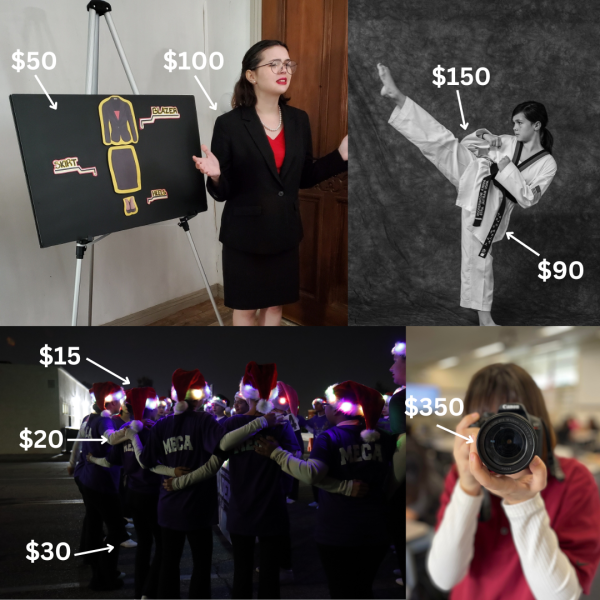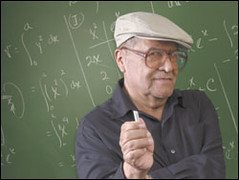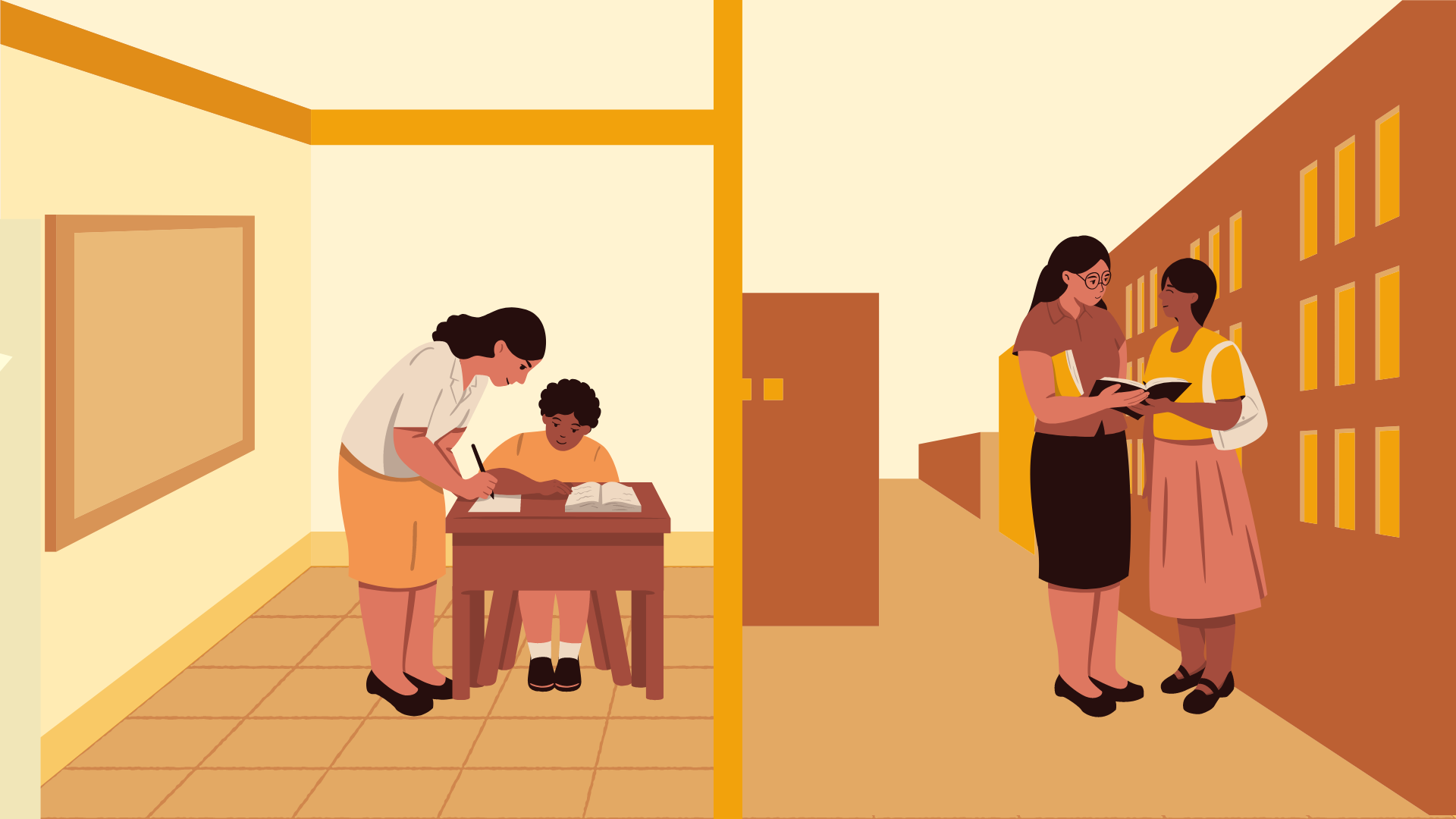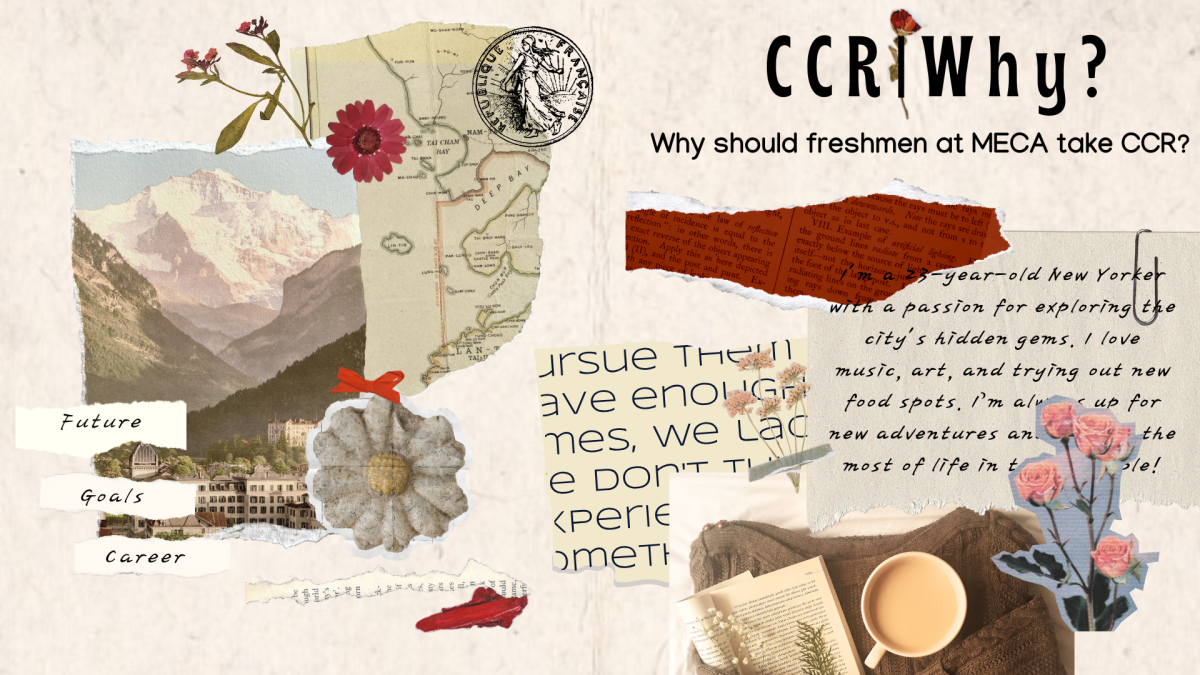This article is an Opinion piece and does not directly relfect the beliefs or ideas of The Academy Chronicle or Mt. SAC Early College Academy.
In the halls of education, where the promise of enlightenment echoes throughout the halls, amid the hustle of classrooms and the chaos of extracurricular activities, the innocence of childhood grapples with a system that sometimes forgets its duty to inspire and protect.
As sunlight spills through classroom windows, it also reveals a tale of unequal access to quality education, where children who are enhanced by financial stability and familial support are competing against those who have been stumbling over the hurdles of underfunded schools, overworked educators, and systemic neglect.
As we peer into the recesses of our educational framework, a crucial question looms: can we rewrite this narrative, dismantling the barriers that stifle the potential of the youngest minds among us?
Extracurriculars
Extracurriculars are essential to a child’s development. Participation in volunteering, cultural activities, experience abroad, and sports allows children to interact with teachers and peers, improving communication skills and self-confidence. Additionally, activities outside the classroom help students engage with their surroundings, promoting the development of talent, creativity, and potential growth.

As Quora user Ron Brown states, “So why are colleges and universities interested in extracurriculars at all? Because they tell something about the applicant… Those extras show something about their character as well as their drive. Does that mean one or the other of those students will necessarily do better once they get into the university? Of course not. But admissions people are looking for something in an application that will separate otherwise good students with similar grades and scores at the margins of the application cutoff.”
Nevertheless, extracurriculars are insanely expensive. Personally, my grandparents spend $2160 a year to help pay for my TaeKwonDo classes; we also spend over $300 to help pay for my Speech & Debate competition outfit, makeup, or travel necessities, dance necessities like shoes and makeup, as well as other fees for clubs like the National Honor Society (NHS) and Mu Alpha Theta (ΜΑΘ). In total, my family spends over $2460 a year for my extracurricular activities, and the costs only increase from there.
According to LendingTree, parents spend an average of $731 per child annually on extracurricular activities. Sixty-two percent of participants said they are stressed about making these payments, and most (42%) have taken on debt to pay for competitive activities.
Kids’ sports is a billion-dollar industry that has nearly doubled within 10 years. To help their children build a better life, parents sign their kids up for popular sports like football, soccer, hockey, and baseball. Nonetheless, with each new sport, the cost of equipment increases, and inflation does not help athletes.
For instance, at the minimum, ice hockey costs $2,583 per year, gymnastics costs $1,580, basketball costs $427, football costs $485, soccer costs $537, and volleyball costs $595. The further you reach in a sport, the more you have to pay. The average cost of summer programs is $1,453, and households with incomes of 100,000 or more spend an average of $2,123. Moreover, participants say they’ll go into debt to pay for the programs.
With all these costs and debt that need to be paid off, children in poverty tend to experience lower extracurricular participation. Although the reasons may vary, extracurricular programs pose a barrier to activities requiring special equipment or other costs. In addition, family or work responsibilities may bring along other challenges, such as transportation to and from after-school programs. Other programs may represent cultural barriers to entry or alienation for some students. Even though no-cost and low-cost options exist, people still have to manage specific challenges to participate.
Extracurriculars aren’t only time-consuming and expensive but also affect one’s salary. In 2022, full-time teachers earned an average of $66,397, including teachers’ base teaching salary, additional sources of income from their schools or districts, jobs outside the school system, and summer activities.
For every extracurricular activity a teacher advises, teachers earn stipends. Stipends are compensation paid to specific individuals for services provided, other work, or while they receive training. This type of compensation is sometimes called an allowance and is generally given daily, weekly, monthly, or yearly.
However, only about 44% of teachers received additional compensations, or stipends, for extracurriculars or other activities. According to the National Center for Education Statistics, these teachers earn approximately $2,630 for these activities on average.
Thankfully, my school district stacks the amount earned for extracurricular activities, meaning that if you were a Yearbook and Journalism advisor at a Middle, Intermediate, or Alternative School, like my Journalism advisor, you could earn $5,800 rather than $2,900. However, this can vary from district to district and state to state.
Yet, these stipends often do not compensate for the stress and the emotional distress extracurricular curricula cause for teachers, mainly first-year teachers or teachers at smaller schools.
“Fast forward to the spring of my first year of teaching English, I often found myself working late, stressing out, and frankly, crying,” explains Mikayla Hensch. “I loved my job, but I was trying to manage my first year of teaching with coaching track and advising a yearbook that would soon be distributed to over five hundred critical teenagers and their parents. I spent many nights leaving track practice to go home to grade papers and edit yearbook pages.”
However, extracurriculars don’t only impact teachers but also student success. Vindas Carmona and Cinthia Jazmín, in their study Teacher Perception about Excessive Amounts of Extracurricular Activities that Interfere with Regular Classes, emphasized that, “there was evidence pointing towards a constructive and beneficial relationship between time management and academic success,” explained Carmona and Jazmín. “The more time students spent on learning new concepts and knowledge acquisition, the more effective and long-lasting the results. On the other hand, lost classroom time caused by canceled classes, for example, translates into a loss for the students. Thus, classroom time used for any other activities other than teaching produces no academic gains for the student.”
And I’ll admit it: balancing my personal, extracurricular, and school life has become challenging. I’m involved with many extracurriculars, both inside and outside of school, and I often spend most of my time at home focusing on said extracurriculars rather than schoolwork. I remember countless times when I would stay up past midnight working on Journalism or Speech & Debate assignments before starting my school work, making me work until 3 am or pulling an all-nighter to finish my schoolwork. Being a part-time college and high school student who prioritizes extracurricular activities to stand out on college applications has negatively impacted my grades and work ethic.
Education
President John F. Kennedy defined education in the United States as ” Our requirements for world leadership, our hopes for economic growth, and the demands of citizenship itself in an era such as this all require the maximum development of every young American’s capacity.” And he is correct; education is a way of preserving our country’s core values and helping the world advance. But Kennedy has clearly never been to a high school in the 21st century, I know he is dead but even his ghost would be shivering in his timbers. I mean, every day, I am surrounded by kids with too much energy for eight in the morning, the weirdest hall passes to have ever existed, some science-experiment cafeteria food, and couples showing way too much PDA in the hall.
Even though education is a fundamental human right, not everyone receives the same education, mainly because many schools lack funding. This can significantly impact the quality of education students receive, as resources and opportunities for growth in one’s academic and social development are limited. And yet, breaking out of poverty is easier said than done.
After touring American schools in the 1980s, writer and educator Jonathan Kozol documented in his book Savage Inequalities: Children in America’s Schools that urban schools were “overcrowded and understaffed, and lacked the basic elements of learning—including books and, all too often, classrooms for the students.” Kozol deemed that the poorest communities had “savage inequalities” compared to the wealthier communities in the 1970s and 1980s, showing that this has been a pressing issue rather than a newfound problem.
An article released by The Commonwealth Institute supports this idea. The report details an in-depth look at resources available at over 1,800 public schools across Virginia. They found that students in high-poverty schools have less experienced teachers and lower teacher salaries. These schools are also less likely to have a critical core curriculum and advanced coursework. Furthermore, they spend less per student on instructors and materials with federal dollars and offer fewer advanced courses.
Even Quora user, Daniel Kaplan, a veteran public school teacher at a Title 1 school, stated,”The school at which I teach is somewhat poor, the entire district (comprised of about 27,000 students) is so poor that every student qualifies for a free or reduced lunch… School grounds are poorly maintained. Ceiling tiles are stained from water damage due to leaking roofs, restrooms are disgusting, fields are more scrub than grass… Necessary materials are often difficult to get. We adopted textbooks that are half online and half hardcopy. We didn’t order enough laptops to accommodate that change. They are supposedly on their way and have been for two years.”
The SAT and ACT standardized tests are significant aspects of attending college. Even though most colleges no longer accept these scores, one’s SAT and ACT can increase the financial aid received by the college they want to attend. It also helps strengthen one’s application if a private college or university still requires it.
A significant aspect of taking any course or test is getting the proper accommodation. The Wall Street Journal analyzed data from 9,000 U.S. public schools and found that students in wealthy areas are most likely to get special “504 designations.” These accommodations include extra time or private spaces when taking these exams.
It is also important to note that wealthier families have more resources to help enhance their children’s educational experiences, such as moving to better school districts, providing enrichment activities, and guaranteeing professional help if needed. Wealthier students are also more likely to attend schools with more AP classes, access to tutors, and standardized testing preparation classes, leading to higher standardized test scores.
The results of college applications and standardized testing led to the top 1% getting the opportunity of a lifetime, which may not have been such an “opportunity of a lifetime” for their family.
Every college senior and junior knows how hard it is to attend an Ivy League school. And when applying to those schools, acceptance rates range from 3.3 to 7.3 percent. However, a new study found that financially well-off students are likelier to attend an Ivy League school. The study later explains that one in six Ivy League students have parents in the top 1%; these parents were found to have had higher SAT scores, finely honed résumés, and applied at a higher rate. Yet, applicants with the same SAT or ACT score(s), children from families in the top 1%, were 34% more likely to be admitted than the average applicant, and the top 0.1% were more than twice as likely to get in. The result is the most transparent picture of how America’s elite colleges conserve intergenerational wealth and opportunity.
Many children are faced with the question: Are these selective private universities taking kids from very high-income, influential families and directing them to remain at the top with each new generation? And how are we meant to go above and beyond if we are not given the opportunity to showcase our abilities? How am I supposed to succeed if I am not given a chance? How do I break out of poverty?
Solutions
“You break it by enabling the human being by helping them see the beauty in them and discover their gifts and to be able to propel them to greatness,” stated West Covina Unified School District (WCUSD) superintendent Dr. Emy Flores. “And to be able to move out of their social class and be able to say, ‘I’m going to take a risk in going this career path,’ or ‘I’m going to do this in this area or that area.'”
And the people who teach us daily are a big part of propelling students into greatness.
Stand and Deliver is a 1988 drama directed by Ramón Menéndez, based on the true story of high school math teacher, Jaime Escalante. The story follows a school full of Latino students from working-class families in East Los Angeles whose academic achievements are far below their grade level. In his class, Escalante pushes his students to achieve higher academic success in algebra and, eventually, AP Calculus. By instructing his class under the philosophy of ganas, roughly translating to “desire,” all eighteen of his students passed the AP exam. This story isn’t about some miracle or coincidence but about believing in yourself and those around you, including your students.

While teaching at Garfield High School, Escalante’s students came on weekends and worked their breaks to prepare for exams; many former students recall Escalante, also nicknamed “Kimo,” tutoring his students until late at night and returning them home late at night. He also employed them as tutors throughout the summer to help other students, showcasing that they could do anything they put their minds to. As a result, many students attended prestigious universities like Occidental, Harvard, Stanford, Dartmouth, MIT, and Wellesley.
While I am not recommending that all teachers do the same and risk overworking themselves, I am simply suggesting that we trust our students and find other ways to support them.
“It’s about each student, [and] the confidence that it builds in them,” said Dr. Flores. “It’s self-efficacy because I’m not big on self-esteem. I’m big on self-efficacy because self-esteem means you feel good about yourself one day, and your emotions will be elsewhere the next day. Feeling yourself, you know that you are capable, you ARE capable, whatever you’re working toward, and you find the skill that builds confidence in you. I want you to have the strength to persevere, to take a test and say, ‘How do I become a master at this best?’ I want you to become the best version of yourself. And when you see yourself developing, think that self-confidence is something that’s going to carry you for life.”
A big part of instilling that confidence, minus through educators, is through extracurricular activities. Yes, it’s expensive, but there are good things that come out of it, and you need to advocate for yourself and those around you to get those opportunities.
“I think extracurriculars should be so much more accessible to people,” said senior Ruby Ortega.”It shouldn’t have to be a thing in public school where you have to pay for yourself like you know; it should be an investment because in order to make good leaders, you need to invest in their personal exploration.”
The work of the West Covina Unified School District’s (WCUSD) board and superintendent is a fantastic example of investing in students’ personal exploration. Even though Dr. Emy Flores has only been superintendent for two years, she has helped create many programs in her district to benefit her students’ future.
For instance, Dr. Flores introduced the Speech & Debate program at numerous WCUSD elementary, middle, and high schools. Even though the program has only existed for two years, we already have a national champion at the middle school level and multiple tournament champions in all grade levels.
As one of the founding members of the Speech & Debate program at the high school level, I could never have imagined being given the opportunity to travel across the United States and compete at the National Speech and Debate Association’s (NSDA) National event.
And thankfully, Dr. Flores and the WCUSD board members have complete faith in this program. As a result, the board has made room in its budget to pay for all Speech & Debate expenses, including plane tickets, tournament entry fees, and supplying students with suits.
Dr. Flores explains, “I’m not going to ask families to pay for something that we have the money for, and this money is not my personal money; the taxpayers pay for the funds that go into a school district… This is taxpayer money, and it doesn’t belong to me but to our students.”
In an exclusive interview, Dr. Flores explains that she was born in a third-world country to a poor family, and her family sacrificed much to send her to the United States. So, at nine years old, speaking no English, she came to America. She was met with numerous limited opportunities, little exposure, and no idea of the world. Therefore, as an educator, she looks at each new program through the mindset of students and parents.
“It comes from the belief that if your school is not good enough for your children, then it’s not good enough for anyone else’s children. And if your school district is not good enough for your children, it’s not good enough for anybody else’s children.”
As a student, I viewed educators as people who simply taught kids the curriculum- nothing more, nothing less. But as I grew up, I found that their job didn’t end there. It doesn’t matter how many resources you have at school or how many colleges you get accepted into; the lessons our teachers teach us stick with us for a lifetime. An educator helps instill confidence and self-efficacy in their students; they help build them from the ground and make them believe that the sky’s the limit. And that is something we tend to take for granted.
So yes, our education system has significant room for improvement; it is the “ganas” inside of us that make the biggest difference.








